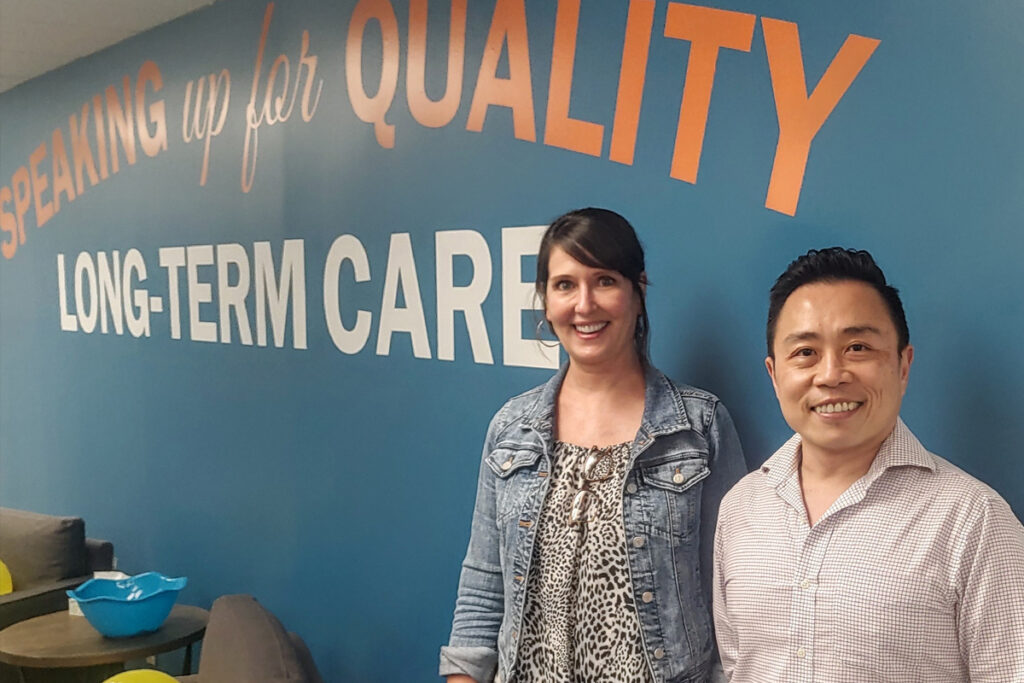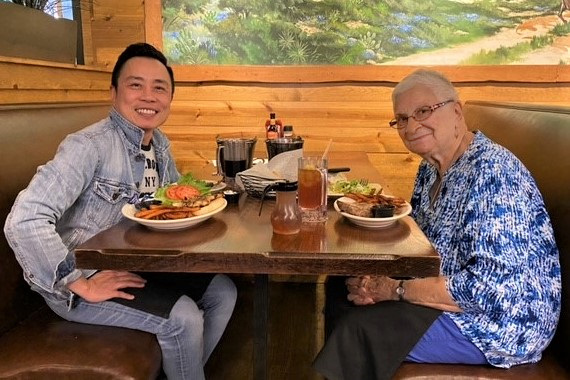Your aging mother has been feeling mistreated at a long-term care facility and you aren’t able to be there. You would like to install a camera in her room. The Long-Term Care Ombudsman Program of St. Louis, now known as VOYCE, has volunteers ready to visit with her and advocate for your mother at no cost. You can also thank VOYCE for helping to pass a law that prohibits the facility from refusing that camera.
Evolution of VOYCE
In the 1970s, amendments to The Older Americans Act of 1965 provided grants to states for community planning and social services for older persons; legislators realized there wouldn’t be enough family members to care for aging Baby Boomers. The Long-Term Care Ombudsman Program (LTCOP) began in a handful of states to see if it would help improve long-term care, particularly for those without a representative or unable to speak. By 1979, the program was successful and operating across all states—including Missouri. Although federally mandated, each state may run their program as they see fit, like Medicaid.
“Ombudsman” is a Swedish term meaning advocate or representative, usually for an organization. In 2012, the St. Louis office rebranded the name to VOYCE because the term “ombudsman” was confusing to many residents.
In Missouri, ombudsmen oversee four levels of long-term care facilities: skilled nursing, intermediate care, assisted living, and residential care. VOYCE visits over 370 long-term care facilities, covering 21 counties in Missouri: a collection of 16 counties in northeastern Missouri, Franklin, Jefferson, St. Charles, St. Louis County, and St. Louis City.
The VOYCEconnect helpline connects individuals and their families with licensed professionals, and answer questions regarding levels of care, financing, and other options. VOYCE provides community education for residents and their loved ones, and professional education for nursing homes, health professionals, and schools.

Lead Ombudsman Lisa Smith works with the five regional ombudsman coordinators. She joined VOYCE in 2017, like many of the volunteers, because of a personal experience. “My parents were up in Chicago and both of them got ill,” she says, “As I was helping them navigate their care, I recognized what a—at times—brutal education it is when you’re trying to learn all things long-term care in that moment.”
Program Director Chien Y. Hung had changed his university focus from literature to mental health because he wanted to understand his father’s severe depression and suicidal thoughts. Later, he earned a graduate degree in Gerontology and joined VOYCE in 2016.
Sex and violence
VOYCE has been instrumental in state legislative victories, including the passage of a bill in August 2019 requiring mandatory reporting of sexual abuse to law enforcement, not just the Missouri Department of Health and Senior Services (MO DHSS). Before then, the onus was on the resident to report, but Chien says that expectation is not realistic. “When grandmom cannot remember her own name, she cannot remember what happened in the dark last night.”
In May 2020, a state law was passed allowing long-term care residents and their families to install cameras in a resident’s room to monitor care. Since then, the number of complaints of sexual abuse have decreased, but the number of residents engaged in romantic relationships has grown, possibly spurred by COVID visitation restrictions.
VOYCE advocates for the resident, not family members or nursing staff. Chien says, “Our job is not to make the family happy, but then make the resident miserable.” He tells the story of two seniors who were romantically involved and had the capacity to consent, but each had a roommate. He worked with the facility to provide a private room as needed. The gentleman’s wife and son were unconcerned with the pairing. The woman’s daughter, however, called Chien very upset. He told her, “Sex right is a human right. If your mother wants to have sex with this gentleman, then it’s not for you to say, ‘I don’t want my mom to have sex.’” She hung up on him.
Older residents, particularly those with memory issues or who lose the ability to speak, can have difficulty expressing their complaints and may act out. Chien remembers a daughter of a resident who complained that an aggressive female resident was not discharged after attacking her while visiting. “At first look, this makes sense,” he says. “If this woman is violent, then why wasn’t this woman discharged?”
Chien talked to the staff and found out the attacking resident—before becoming nonverbal as her illness progressed—would talk about the other resident as her own child, who had died of a drug overdose. Chien says the resident saw the visiting daughter as a drug dealer and tried to forcibly separate them.
Lisa says disruptive behavior may also be due to a current urinary tract infection, a change in medication, or a needed change in medication. “If it’s an acute event, you have to try some interventions before you discharge them. If you accept a resident with dementia, that kind of behavior isn’t unexpected.”
Chien says long-term care facilities tend to be consistent in required Health Insurance Portability and Accountability Act (HIPAA) training or diversity training, but facilities vary in their sensitivity, bullying, or resident rights training.
Trained volunteers
VOYCE volunteers attend 20 hours of state-standardized testing online or in-person. Once training is completed, a new volunteer will go on shadow visits with an established volunteer for a minimum of eight hours.
A regional coordinator will choose several locations to visit with the volunteer, based on the volunteer’s location. Lisa says, “Each home has a different vibe and, especially if you’re going there every week, it’s important that you see yourself fitting there.” Once the location is set, the volunteer works independently.
Volunteers are expected to set their own schedules and visit for two to four hours each week. They document what was done, who they met with, and any complaints that come up during the visit. Most volunteers will meet with up to 15 residents per visit. Some of the larger homes may have over 300 residents.
VOYCE volunteers are exempt from some HIPAA restrictions. Ombudsmen may need the facility to share some health information to properly advocate for a client, particularly those with dementia, but volunteers cannot look in medical charts or share private information.
In 2019, VOYCE handled 13,000 nursing home complaints, all of which are coded. If volunteers are denied entry into a state-licensed facility, they can be cited. Lisa says they must be thoughtful about how much they push employees as they are needed to help resolve problems.
COVID-19 Impact
Ombudsmen were not allowed access to facilities during the COVID-19 pandemic until they were fully vaccinated. Prior to the vaccine, volunteers would still call residents, and some made masks and dropped them off. One volunteer made window visits each week and created cards for residents. Lisa says, “We have wonderful volunteers. It was very heartening to see how much they missed their residents.”

Peggy Chrow, an 88-year-old volunteer in Kirksville, Mo., has been advocating for residents for over 20 years. She lost many of her residents to COVID-19. Peggy was able to resume her visits in April, but restrictions were reinstated several months later due to the Delta variant. She says she’ll keep fighting with a smile on her face.
VOYCEconnect Helpline is a community resource for those in search of nursing home options, elder law attorneys, or long-term care financing options. (314) 919-2403.